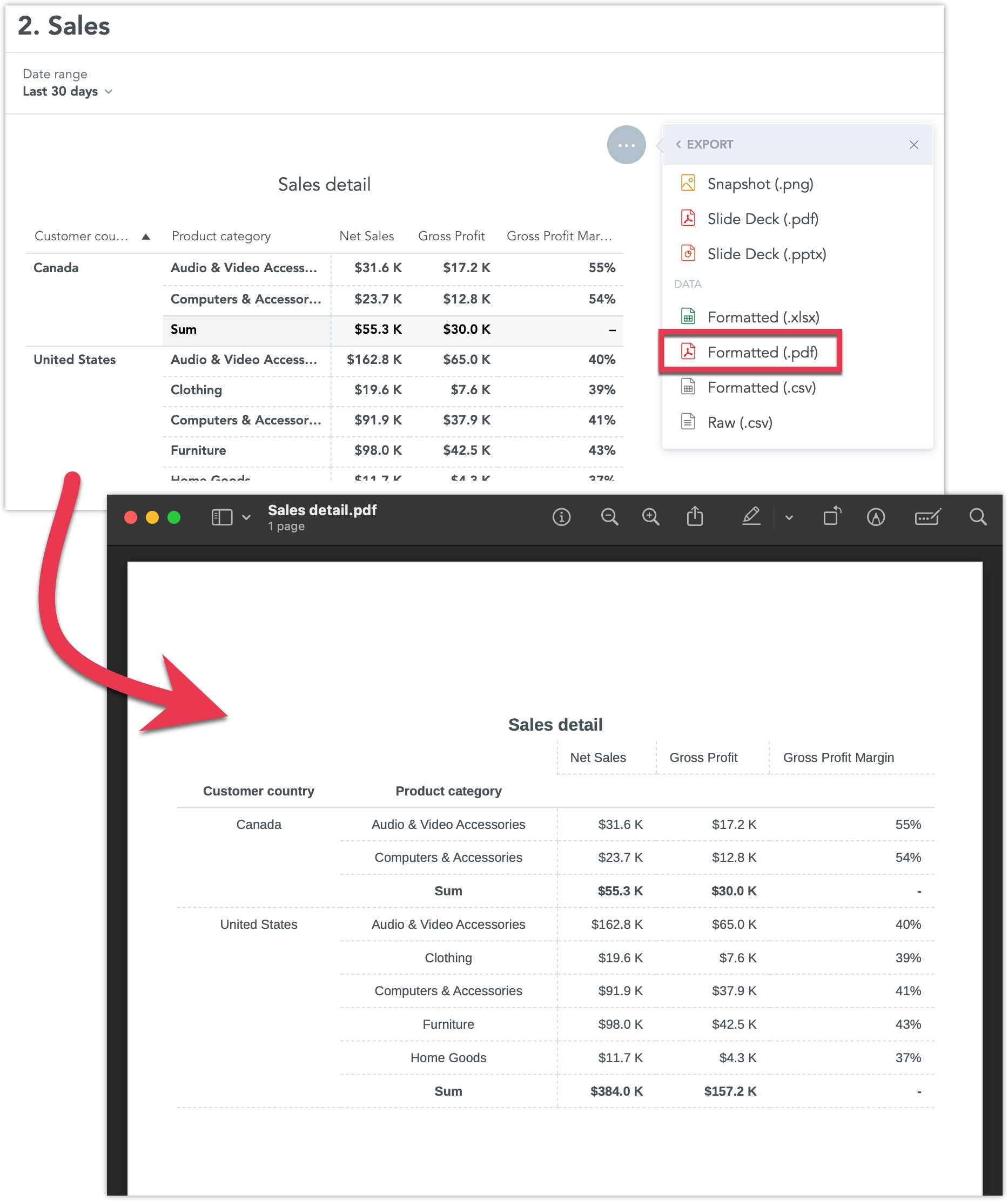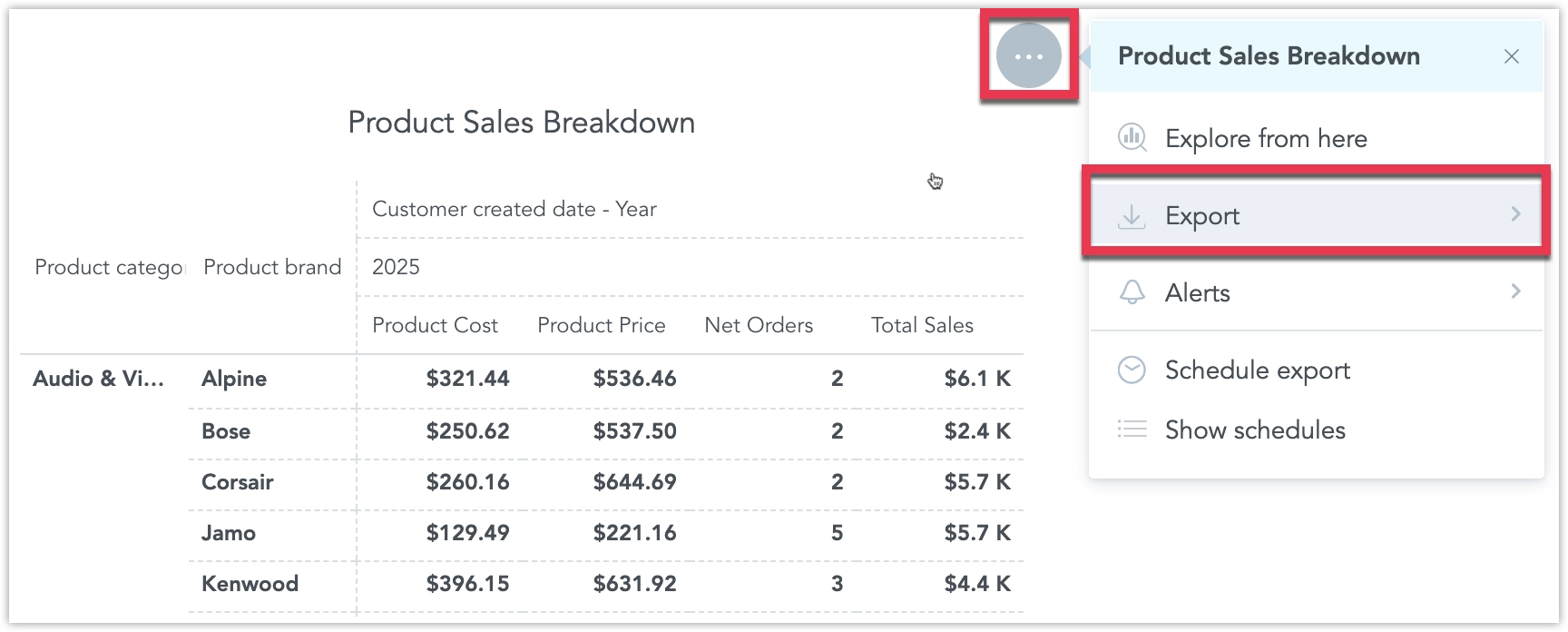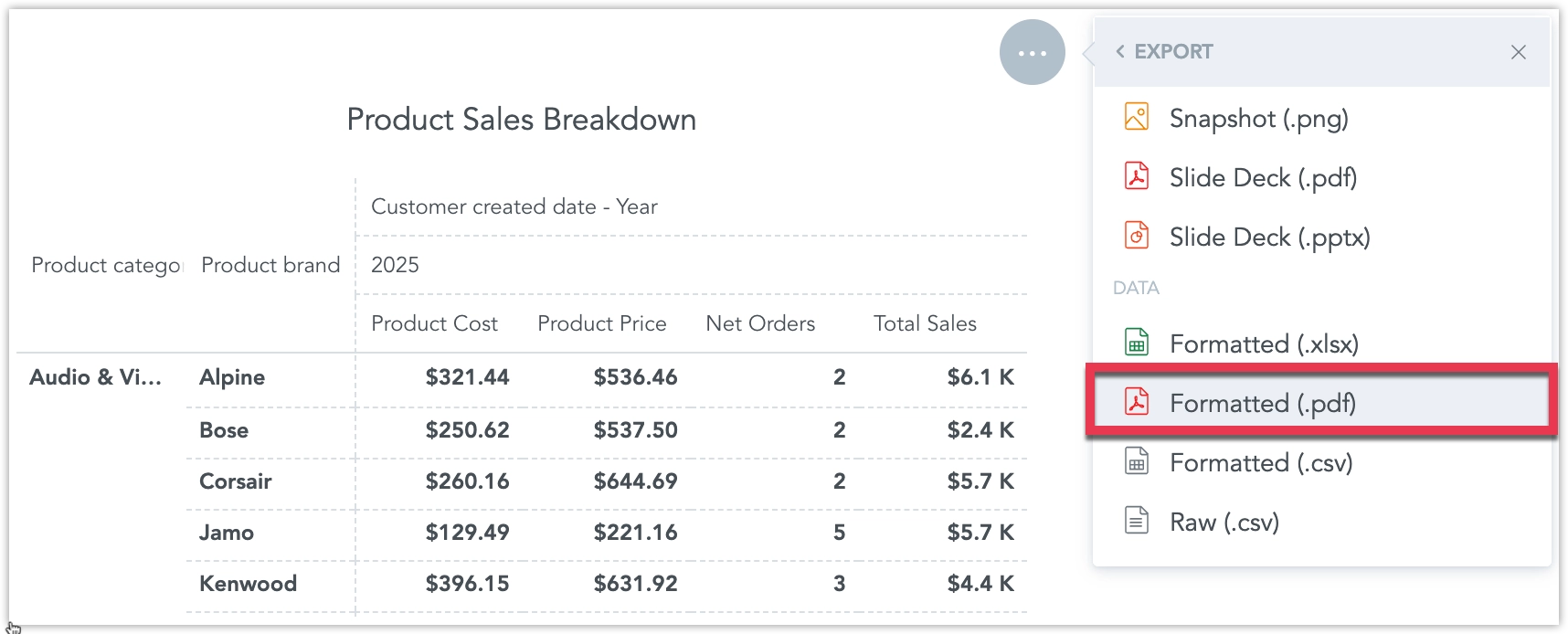Pivot Table PDF Exports
Beta Feature
This is a beta feature. It is still in active development and not yet recommended for use in production.
Enabling this feature lets you export pivot table data directly into well-formatted, paginated PDF documents from dashboards. This makes it simple for non-technical users to create polished reports to share with stakeholders outside the platform.
The export preserves formatting such as headers, row sorting, and metric styles, and works seamlessly in both native and embedded dashboards.
Steps:
On a dashboard, open the … context menu on a table widget and select Export:
Select Formatted (.pdf):
Wait for the export to finalize.
Formatting Details
In the exported table we preserve the following properties from the dashboard widget:
- column widths
- sorting
- metric formatting
- merged rows
Table configurations for wrapping is not preserved. Text wrapping is always applied automatically. This ensures that no values are cut off, since PDFs do not support hover interactions and are meant to display the full data range.
Current implementation uses embedded DejaVu-Sans font, which ensures consistency but is not customizable.
Context in the Export
Each PDF includes the title of the visualization, applied filters, and a timestamp (either in header or footer). The file name matches the name of the table widget/visualization.
Scheduling
Pivot table exports are also supported via scheduled exports (using the same automation framework as other exports).
Users can configure recipients and delivery methods (depending on their permissions and admin settings).
Accessibility and Compliance
The exported PDFs are designed to be WCAG 2.1 AA and PDF/UA-compliant, ensuring that screen readers interpret table semantics correctly.
Headers are automatically repeated on each page for clarity and accessibility.


